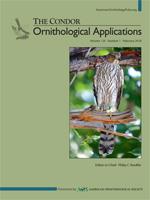Much of our understanding of en route landbird habitat use comes from research performed at local scales, ignoring effects at larger spatial scales. We used a multiscale approach to investigate stopover habitat use by landbirds using transect surveys in 68 forested sites in southwestern Michigan, USA, during the springs of 2002 and 2003. We modeled relationships of bird density and arthropod abundance with broad-scale spatiotemporal factors (year, day of year, geographic location) and local landscape (forest composition and structure, presence of open water) as well as site-scale factors (bird density and arthropod abundance, which exchanged roles as predictor and response variables). We found migrant densities to be most influenced by fine-scale factors, such as the abundance of other avian taxa and substrate arthropods, followed by broader-scale factors, such as forest structure and location, within the local and broader surrounding landscape. We found that migrant habitat associations either did not directly match or were weakly associated with the availability of riparian or lacustrine water habitats at a local scale, even though our results suggested that birds using these habitat cues would have encountered more arthropods. Rather than finding indirect measures of food abundance—such as distance to a water source or forest cover at the landscape scale—important, our models best explained bird density by a direct relationship with site-scale food resources. Thus, the scale at which migrants demonstrate habitat selection appears to be influenced by proximate mechanisms such as high-quality habitat availability and the presence of large ecological features within the landscape. Not only do factors operating at multiple scales influence how birds use habitats, but scale also influences how we interpret research findings, in turn influencing conservation decisions.
How to translate text using browser tools
10 January 2018
Fine-scale heterogeneity drives forest use by spring migrant landbirds across a broad, contiguous forest matrix
Theodore J. Zenzal,
Robert J. Smith,
David N. Ewert,
Robert H. Diehl,
Jeffrey J. Buler
ACCESS THE FULL ARTICLE

The Condor
Vol. 120 • No. 1
February 2018
Vol. 120 • No. 1
February 2018
boosted regression tree
habitat use
inland forest
landbirds
Michigan
migration
multiscale




